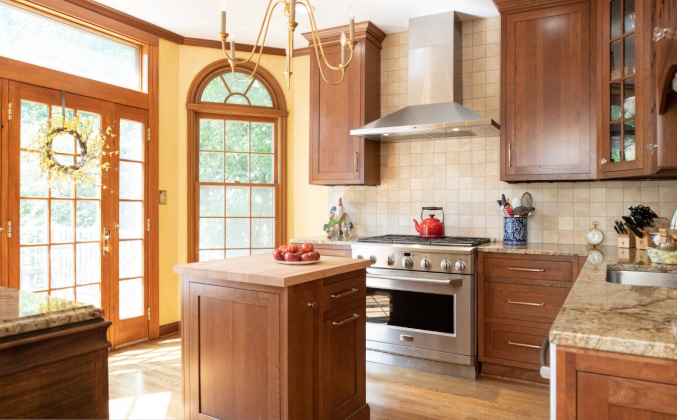Look for More Than a Kitchen Remodeling Contractor Near You for a Period-Appropriate Design
A home’s design elements play a major role in its overall style, and that’s especially true when it comes to historic properties. The details of an old house are products of the time period in which it was built; they reflect the construction methods of the day and give us a better understanding of how past residents lived.
For centuries, humans have been intentional about the materials that go under their feet, making flooring one of the most telling features in a home. In ancient Greece, mint was scattered on floors as a natural room freshener. Early American settlers used sand as well as peanut and sunflower seed shells to reduce dirt and dust.
As a high-traffic area, a kitchen’s floors are perhaps some of the most important in a home. The material not only needs to fit a property’s unique architectural style, but also withstand heavy daily use. Finding that perfect balance is key to a historic kitchen renovation that looks cohesive and feels authentic.
Keep reading to learn more about some of the most popular historical flooring options and how they can be used effectively in your upcoming project.
Go Classic with Hardwood Floors in Your Historic Kitchen Renovation
Although hardwood is among the most popular types of flooring today, the material comes from humble origins in colonial America. The first floors were made from wide, thick rough-sawn planks that were left bare and became burnished after years of use. Decoratively painted wood floors grew in popularity in the 18th century, but it wasn’t until the late 19th century that floorboards began to have a more polished appearance.
If you opt for hardwood for your historic kitchen remodel, pay attention to the other styles of wood throughout your property, so you can create a seamless transition. You should also consider which species would have been readily available when your home was originally constructed. A historic kitchen renovation specialist can make recommendations and help guide you to a period-appropriate solution.
If your floors currently feature another material, like carpet, keep in mind that there could very well be hardwood hiding underneath, as a result of previous changes to the home. In this case, you may just need to have the hardwoods professionally refinished to restore them to their original glory.
Enhance Your Kitchen’s Visual Interest with Mosaic Tile
Mosaic tiles are commonly used in bathrooms, but they can look just as beautiful in historic kitchens. The material started gaining traction in homes in the 1860s and remained a go-to option well into the 20th century, meaning it’s an excellent choice for Queen Anne, Colonial Revival, and other houses from that period.
Reminiscent of rugs, mosaic tile floors make a statement, whether you’re going for a more classic or intricate design. There are a wide range of colors, styles, and patterns to choose from for your historic kitchen renovation, so you’ll have no trouble creating a look that both suits your home and your personal tastes.
In the kitchen, matte mosaic tiles are best for a slip-resistant surface. They’re also incredibly easy to clean, and matte-finished mosaics can even be waxed and sealed to help repel dirt and moisture.
Add Unconventional Texture to Your Historic Kitchen Remodel with Stone and Brick Flooring
Stone and brick flooring may seem like an unusual choice by today’s standards, but the material is often used throughout historic properties. Brick can be traced back to colonial times, where pavers were commonplace solutions for above-ground basements and summer kitchens. Stone tends to work best in Early American, Georgian, and Neoclassical Revival houses.
Although brick and stone come in more limited colorways, they can be installed in a wide variety of patterns. Square stones with alternating tones are subtle, but striking, and can be accented with small, artistic inlays. Brick’s deep red to dark brown hues look gorgeous laid in a herringbone, basket weave, or running bond design.
One of the biggest benefits of both of these options is their longevity and durability. When cared for properly, they can last a lifetime. If you select either stone or brick for your historic kitchen remodel, know that a sealant is a must to prevent staining, mold growth, and cracking.
Getting Started on Historic Kitchen Renovation
When you’re ready to begin planning your project, you have to look beyond general kitchen remodeling contractors near you. You need a historic kitchen renovation expert with the knowledge and skills to maintain the integrity of your property.
While your kitchen should be updated for modern functionality, it shouldn’t lose the distinctive details that make it so unique. A true specialist can weave these approaches together to create a historically accurate design with livable style.
For more information, contact a trusted professional with a proven track record of successful historic kitchen remodels.


